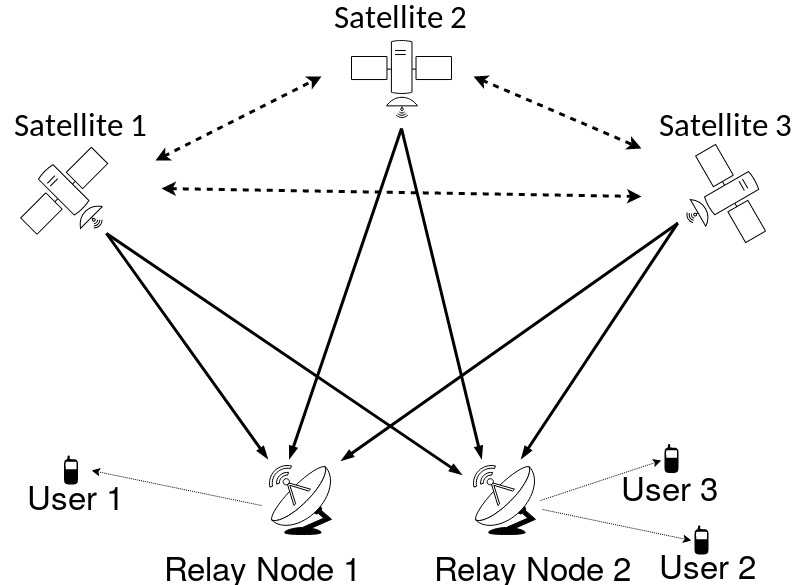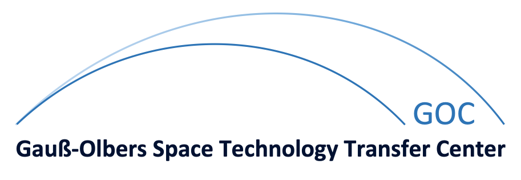Simulation platform for conception, optimization and evaluation of 5G satellite constellations for the ubiquitous and everywhere available Internet (5GSatOpt)


Motivation
Currently the aerospace industry is changing politically, economically and technologically. Whereas technology development, mission planning or the operation of space missions was originally initiated and dominated by the state, space access and orbital applications will be organized in a much more private-economical way in future, characterized by completely new technological approaches, applications and business models.
One key technology of this so-called NewSpace are cheap and highly available small satellites, which can perform specific tasks for a wide variety of applications cooperatively in larger scalable constellations or swarms like a large system distributed in space.
Parallel to the Space's New Space Evolution, terrestrial communication systems are also undergoing a paradigm shift with the development of the 5th generation of mobile communications (5G) - the focus is no longer on broadband connectivity, but on communication between machines and things. Driven by the vision of digitization, 5G will be the communication infrastructure of the IoEE of a future society. Only 5G provides the technologies needed to implement applications such as autonomous driving, the digital industry, digital agriculture and digital logistics. For many of these applications, a reliable and nationwide supply is absolutely necessary. Experience with the development of previous mobile radio standards (3G, 4G), however, shows that this can not be achieved by purely terrestrial communication systems.
Objectives and approach
|
The project 5GSatOpt deals with the integration of satellite constellations of small satellites into 5G. Although the 3GPP consortium already defined the general integration of satellites, it is not yet defined which communication technologies should be applied for ground-satellite as well as for inter-satellite links. This open window of opportunity is to be used by companies in cooperation with science in order to secure long-term advantages in the market of the 5G NewSpace with the help of research and development of innovative space technologies. For this, the development of a simulation platform for the conception, optimization and evaluation of such innovative space technologies is a first and necessary research and development activity. There is currently a simulation platform at ZARM for the analysis of a single satellite. Thus, it is important to develop this platform into a simulation platform for swarms of 5G communication satellites. |
 |
Innovations
The development of a simulation platform for the design, optimization and evaluation of 5G satellite constellations will provide an important tool for future mission planning in the area of the 5G NewSpace. The lessons learned and results obtained in this project can be directly included by the participating companies in the local space industry as a basis for decision-making for product development, such as future 5G satellite transceiver technologies. The results of this project thus determine the future products of the local space industry.
Coordinator: Prof. Dr.-Ing. A. Dekorsy, University of Bremen, Institute for Telecommunications and High-Frequency Techniques
Further readings
Details
| Duration: | 05/2019 - 04/2020 |
| Funding: | European Regional Development Fund |
| Partners: | DSI Aerospace Technologie GmbH OHB System AG ZARM Technik AG Center of Applied Space Technology and Microgravity (ZARM), University of Bremen Zentrum für Technomathematik, University of Bremen |
| Research Focus: |
Distributed Processing/In-Network-Processing
Cooperative Communication Signal Processing for Communications |
| Precursor: | Communications for Satellite Constellations |
Publications
-
LEO Small-Satellite Constellations for 5G and Beyond-5G Communications
BibTEX

I. Leyva-Mayorga, B. Soret, M. Röper, D. Wübben, B. Matthiesen, A. Dekorsy, P. Popovski
IEEE Access, Vol. 8, pp. 184955-184964, October 2020, DOI -
Robust Distributed MMSE Precoding in Satellite Constellations for Downlink Transmission
BibTEX

M. Röper, A. Dekorsy
2019 IEEE 2nd 5G World Forum (5GWF), pp. 642-647, Dresden, Germany, 30. September - 2. October 2019, DOI -
Information Preserving Quantization and Decoding for Satellite-Aided 5G Communications
BibTEX

T. Monsees, D. Wübben, A. Dekorsy
IEEE 5G World Forum, Dresden, Germany, 30. September - 2. October 2019, DOI -
5G-NewSpace
BibTEX

A. Dekorsy, F. Bittner, D. Wübben
ITG News, pp. 4-5, Germany, October 2018
Involved Staff
- A. Dekorsy
- F. Bittner
- D. Wübben
- M. Röper







